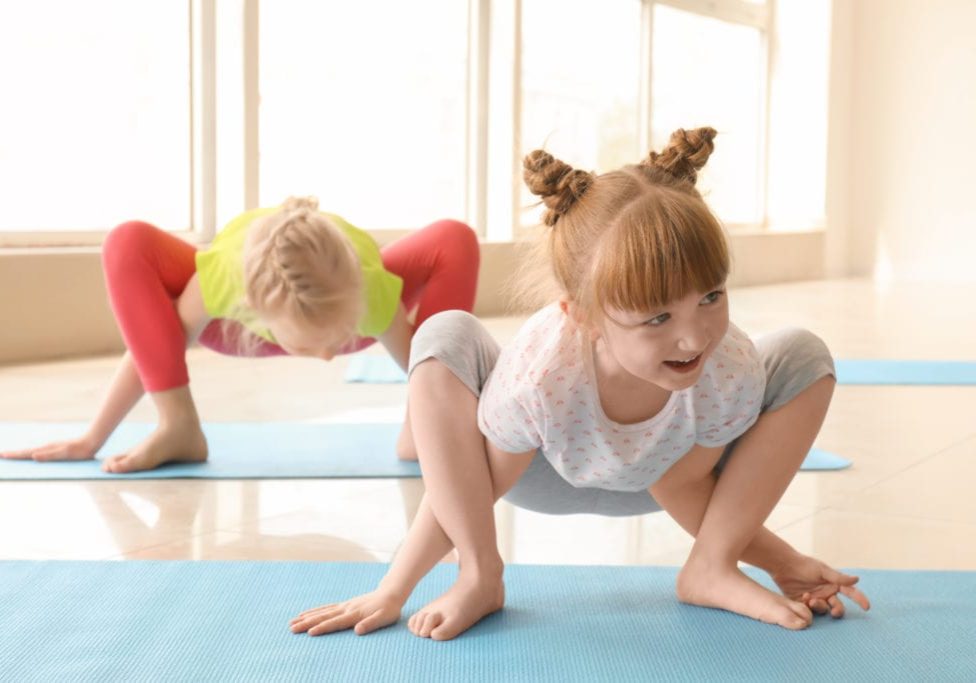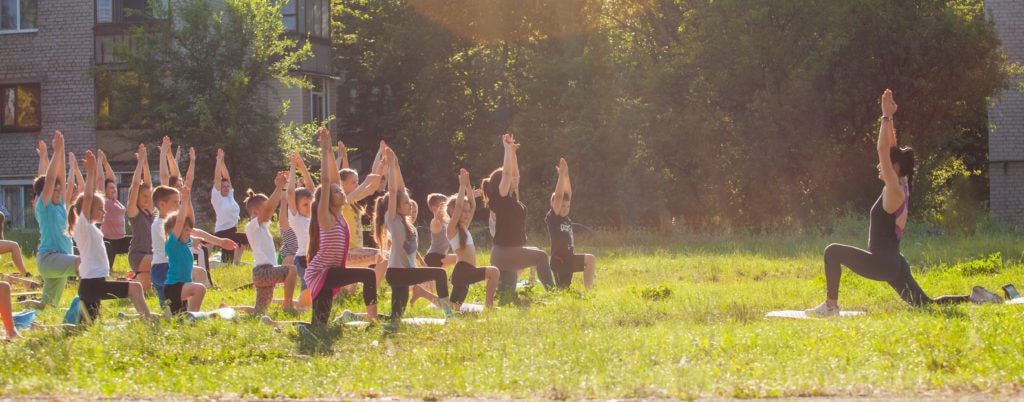Children’s Yoga
So often you will hear fellow yoga practitioners say: “Oh, I wish we had practiced yoga as a child” or “ Wouldn’t it have been amazing if we had found yoga as a child.”
As adults we know the benefits a regular yoga practice can bring, we know how fabulous we feel after a good class, we trust that yoga can shake off the stress of a day bringing us back to balance and usually can’t wait until our next scheduled class! We highly recommend the practice of yoga to as many people as we can: children included! Giving children the opportunity to cultivate a love and interest for yoga from a young age, is such a magical gift we can give to our younger generations.

What is Children’s Yoga?
Children’s yoga is generally a 30 to 60 minute class depending on the specific age group. The class will consist of the same elements you will find in a Hatha Class: meditation of some form, simple breathing practices, poses and postures, mudra’s (hand gestures), Sanskrit (Ancient Indian language) and a sprinkle of philosophy.
All the poses and breathing practices taught in a children’s yoga class have been chosen specifically for safety and appropriateness for children. Less serious and organised than your adults yoga class, children’s yoga incorporate fun, laughter, games and a dash of sparkle.
What to expect from a children’s yoga session
Every teacher will have their own style when it comes to teaching a children’s yoga class, so there is no standard structure. However, there are some common things you can expect from a children’s yoga class.
Usually, the classes will be grouped into an appropriate age range to compliment the children’s development.
Often, 5-8 year olds will be grouped together with the session typically lasting 30 minutes and 8-12 year olds will be grouped for a session of 45-60 minutes.

Storytelling is something you can expect to see in almost all children’s yoga classes. Each pose in the class representing a character, this enlivening the children imagination, making the class fun and engaging, whilst still teaching yoga poses and principles. The story may conclude with some sort of ‘pearl of wisdom’ which encourages the children to have a positive thought to take away with them. For example: being patient and kind with others or celebrating everyone’s uniqueness. The yoga poses taught in children’s yoga are much like those you would see in a Hatha yoga class but with fun and appealing names such as ‘soaring bird’ instead of Warrior 3, to make them more memorable to children. Each class will guide the group though 5-10 poses, with the teaching instructing the children to watch, listen and focus whilst the teacher demonstrates the poses one at a time. After the children have listening to the instructions they can then come into the pose, with the teacher checking their form and positioning.
Yoga allows a space for growth, confidence and self-esteem. With a group of children that has been attending children’s yoga for some time, the teaching may offer extra opportunities. If it is appropriate the teacher might ask the children to play the role of the teacher, asking them to choose a pose and demonstrating it to their group. Taking it in turns to be the teacher so everyone gets a chance to “show-off” their knowledge of their favourite pose. This helps to reinforcing the learning and develops communication skills.
In a children’s yoga class you can expect to hear funny noises, animal sounds and humming, in-between the giggles and sounds of joy from the children. Children’s yoga classes are spaces of play and expression. This may be in the form of singing, playing games, partner work and creating sounds for the characters in the story.
The final key aspect of children’s yoga, which may be argued the most valuable, is meditation, breathing and relaxation. Of course, we don’t expect children to sit quiet and still for any duration, but with practice you will notice children settle down much quicker. These practices give children vital tools to help self- regulate and self-sooth. Some particularly popular children yoga practice are: bringing their hands to their tummy and taking a few deep belly breaths, the bumble bee breath where the children hum on the exhale and chanting OM. The class will finish with a short relaxation, the children lie down flat on the ground in a star fish position, arms and legs spread out. The teacher will then guide them to either count their breaths or a talk them through a visualisation of a scene from the story told in class.
Benefits of Children’s Yoga
Yoga is often praised for its health benefits from increasing flexibility, strengthening muscles, improving balance, helping to calm the mind, just to name a few! Which is all good news, but with children’s yoga the benefits have so much more potential. There is an opportunity through children’s yoga to build firm foundations for good physical and mental health, improved posture and cultivate an appreciation for the world they live in.

With a rise in mental health illnesses in our culture which sadly includes our younger population, combating stress has never been so important for the development of our future generations. Couple this with the virtual age we now live in where so many children are spending a good portion of their days looking down at their phone and living through computer screens. The time spent on technology may cause dysfunction in their muscular skeletal development leading to poor posture and more complications down the line, it is also a quick way to become disconnected from the world we live in and become addicted to a world that is not reality. Children’s yoga can swoop in and intersect this, bringing a state of balance back to children’s systems.
Some of the key benefits Children’s Yoga has to offer:
- Regular yoga can help improve posture, strength, balance and flexibility (of course!)
- Creating a healthy relationship with their bodies. Developing proprioception, which is their awareness of their body in space helping with coordination and balance. Also, developing their interoception, which is their awareness of how their body feels.
- The classes offer a safe space for children to move without the pressure or stress of competition. Setting boundaries where the children know this is not a space to compete but instead, to celebrate their uniqueness.
- Developing their imaginations through storytelling and creating their own postures.
- Ignite their curiosity through learning a tradition from another culture, which will kindle respect, awareness and understanding for differences from around the world.
- Develop their team work and social skills through playing with others in groups, increasing their capacity to be kind and empathetic.
- Through learning a discipline the skills of focus, attention and memory is developed.
- Fosters self-confidence, self- belief and self expression.
- Equipping children with tools to deal with stress and teaching them how to relax.
- Allowing children to play and have fun, whilst still learning which can set them up for a lifelong relationship where they have a positive attitude and natural enthusiasm for learning.
